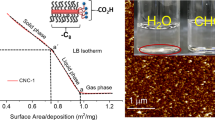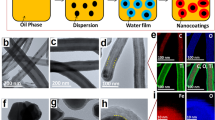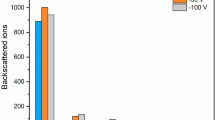Abstract
IN two articles in Nature of March 15, 1947, a method is given for making very thin metal films, 10–20 A. or more in material thickness. On the surface of a film of cellulose nitrate, etc., there is evaporated a small amount of, for example, beryllium or aluminium. Then the basic film is dissolved away by amylacetate or other appropriate solvent, the metal being left free. Such films of beryllium or aluminium are especially useful as supporting membranes for electron microscopical studies. As a rule these metal films have no visible structure. It may, however, happen that a faint structure appears even if the film is very transparent in the electron microscope. This structure effect may depend upon the fact that all the cellulose molecules are not nitrated to the same degree, some of them being insoluble in amyl acetate. Other explanations may be that a molecular layer of the cellulose nitrate adheres very closely to the metal surface and does not go into solution, or that some of the very active metal atoms have penetrated into the cellulose molecules. I have now found that the structure effect mentioned above does not exist when using acrylates instead of cellulose nitrate, collodion, etc., as the basic film. The solvent then used is ethyl acetate. The metal films made are almost invisible in the electron microscope when made 20 A. in thickness, and the photographic contrast effect of the object particles is increased compared with that obtained with ordinary supporting membranes, which is of the greatest importance when studying molecules or other minute particles.
This is a preview of subscription content, access via your institution
Access options
Subscribe to this journal
Receive 51 print issues and online access
$199.00 per year
only $3.90 per issue
Buy this article
- Purchase on Springer Link
- Instant access to full article PDF
Prices may be subject to local taxes which are calculated during checkout
Similar content being viewed by others
Author information
Authors and Affiliations
Rights and permissions
About this article
Cite this article
HAST, N. Production of Extremely Thin Metal Films by Evaporation on to Liquid Surfaces. Nature 162, 892–893 (1948). https://doi.org/10.1038/162892a0
Issue Date:
DOI: https://doi.org/10.1038/162892a0
Comments
By submitting a comment you agree to abide by our Terms and Community Guidelines. If you find something abusive or that does not comply with our terms or guidelines please flag it as inappropriate.



